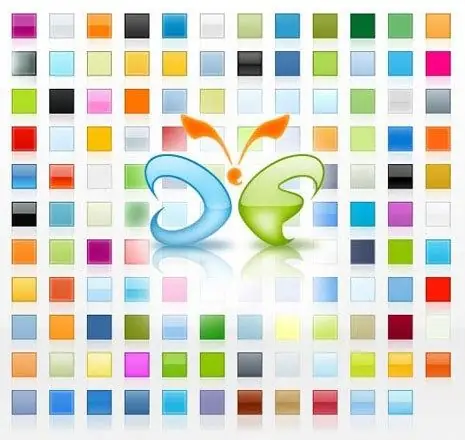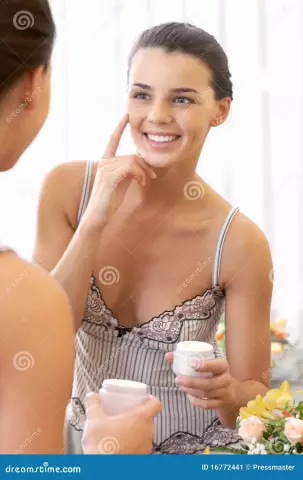The main strength of styles is ease of use. They can be easily added to a layer, and modified or removed if necessary. With the help of styles, with one click of the mouse, you can apply a variety of different effects to an image - glow, drop shadows, strokes and others. Styles are most often used in web graphics and text processing, but they are also great for graphic design of sports and portrait photos.

Style palette
If you click on the fx icon located at the bottom of the layers palette, a large dialog box Layer Style - "Layer Style" will open on the screen. It is with its help that various styles are created and configured. There are several sections on the left side of the window. Styles - "Styles" is intended for the selection of ready-made styles, Blending Options: Default - "Blending parameters: default" is used to set the layer blending mode.
The other ten sections are used to apply and customize layer effects. To activate the effect, you need to click on the line with its name. This will show the effect parameters on the right side of the window. All shadow effects are based on the Multiply blending mode, and the glow effects are based on the Screen mode.
Layer Effects
Bevel and Emboss - "Embossing" is used to create reliefs and add chamfers, used as an addition to 3D objects. When adjusting this effect, you can select different types and depths of extrusions, set the direction of the relief and the width of the bevel, define the amount of anti-aliasing, and adjust the lighting. Additionally, you can use the sections Contour - "Contour" and Texture - "Texture".
Stroke - Stroke creates different types of color, gradient, or decorative strokes on a layer. The settings for this effect control the width of the stroke and its position relative to the edges of objects. Satin - "Gloss" imitates folds on fabric, ripples on water, cloudy liquid. In the settings, you can set the direction, offset and size, as well as specify the shape of the outline.
Inner Shadow - "Inner shadow" creates a shading inside the object itself, by default it is black. Shadows are rarely black, so it is better to choose a color depending on the image (for example, on grass they will be dark green). In addition, you need to adjust the opacity and angle of incidence of the shadow, determine the distance at which it will be located inside the object, and the degree of blurring of its edges. If you tick the parameter Global Light - "Global illumination", then the effects on all layers of the document will have the same direction. Drop Shadow - "Shadow" creates a shadow from an object on a plane and has similar settings.
Inner Glow - "Inner glow", creates an imitation of an object glowing from the inside. You can define the density of the glow, its source (from the center or at the edges), noise, the accuracy of the calculation of the edge of the glow, the degree of blur and feathering. Outer Glow - "Outer glow" is used to highlight objects or text. In the effect settings, you can set such parameters as opacity, noise, edge calculation accuracy, size and span.
Effects of the Overlay group - "Overlay". This group includes three effects. When applied, the content of a layer is overlaid with a color, gradient, or pattern. Color Overlay - "Color overlay" imposes a solid color fill on the image. In the effect settings, you can choose any color, blend mode and opacity. Gradient Overlay - Overlays the content of the layer with a gradient. Clicking on the gradient swatch opens an editor window where you can select an existing gradient or create a new one. Pattern Overlay - "Pattern overlay" adds the specified pattern. At the same time, using the effect settings, the pattern can be moved, scaled and recolored.
Create your own style
One or more of the following effects can be applied to each layer of the image, excluding the background. The combination of customized effects is called a style. The created style can be saved. To do this, just click on the New Style button, which is located on the right side of the palette. In the window that opens, you need to enter the name of the new style and confirm it by clicking on OK. Your style will be added to the standard set, and you can use it in future work.
It should be remembered that all sizes when setting up effects are specified in pixels, and the style will look different on an image with a different resolution, it needs to be scaled. To do this, use the Scale Effects command - "Influence of layer effects", which simultaneously scales all the effects of the layer. If you want to make another version of the created style by selectively changing the effects, then double-click on the name of any of them - the Layer Style window will open, in which you can make the necessary changes. Remember to save your new style with a different name.






